47 F. average high on March 27.
43 F. high on March 27, 2016.
March 28, 1924: A drought is broken with style in southern Minnesota as up to 25 inches of snow falls.

Solution to Climate Change Shining Above Our Heads
Psychiatrists tell us that people often deny there's a problem until and unless there's an obvious solution. I'm getting past the gloom and doom and chronic hand-wringing by focusing on solutions.
Psychiatrists tell us that people often deny there's a problem until and unless there's an obvious solution. I'm getting past the gloom and doom and chronic hand-wringing by focusing on solutions.
Yesterday
"Caring for Creation" co-author Mitch Hescox and I spoke in Chisago
County, where all 20,000 homes are powered by solar. The North Star
Project, largest in the Midwest, has 440,000 panels and generates 100MW.
Think
climate change is a hoax? The atmosphere doesn't really care what you
believe, but do you like to save money? "We are projected to save $6
million over 30 years" says Pat Collins, at Chisago Lakes Schools. Turns
out there is an ROI. In many parts of America, solar and wind is now
the cheapest form of new electricity, even more cost-effective than
natural gas. Goverment shouldn't pick winners and losers; let the
markets (and technological innovation) decide.
As
someone pointed out to me, God buried toxic, carcinogenic 'dinosaur
juice' deep underground - and put a free, safe, secure fusion reactor
directly above our heads. He couldn't have made it any more obvious.
Some
of that free solar power lures the mercury to 60F again today before
the next storm brushes southern Minnesota with showers late Wednesday
into Thursday AM. The atmosphere is still too cool and dry and stable
for any widespread severe outbreaks close to home.
Highs reach the 50s into next week; a few degrees above average. Not bad at all.
A Clean Power Revolution.
You might think that an inevitable clean energy revolution would kick
off in Edina, or Woodbury or Wayzata. You'd be wrong. It turns out
Chisago County has been the definition of an early-adopter with solar.
Here's an excerpt from 7th grade Middle School Teacher Pat Collins: "...Chisago
County has enough solar capacity to power 20,000 homes ... and we
have... about 20,000 homes. :) We have a number of solar gardens in the
county, including the largest solar installation in the Midwest, the
North Star Project, which has 440,000 panels and is 100 MW. http://minnesota.cbslocal.com

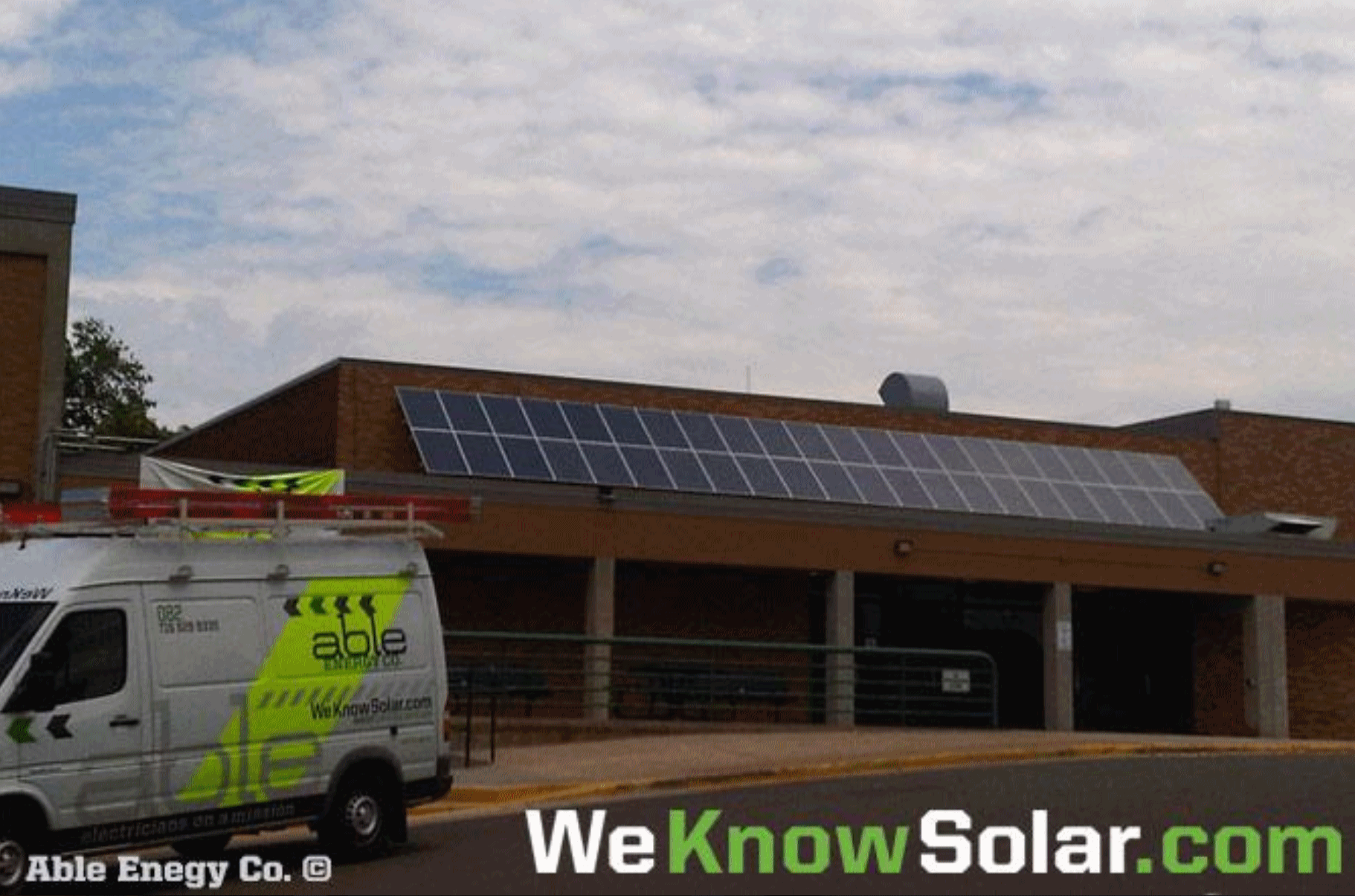
How Has Solar Improved the Local Area? I asked Pat Collins to address the ROI for solar: "I think the economics of our solar panels will be staggering... saving 6 million dollars over 30 years is great with always tight school budgets.... and then the question becomes... what programs can the extra money be put into? Fine arts? Academics? Bricks and Mortar? And the thought that we will prevent 56 million pounds of Carbon Dioxide from being emitted is priceless.... Perhaps the best benefit is that the solar energy and the news that it brings keeps environmental concerns in the spotlight and family conversations and the cost benefit of that is presses.
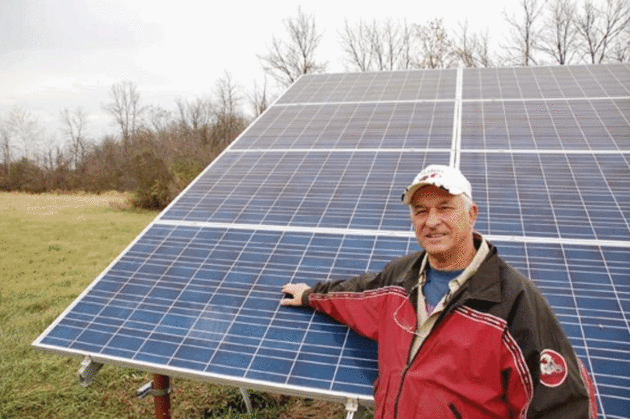
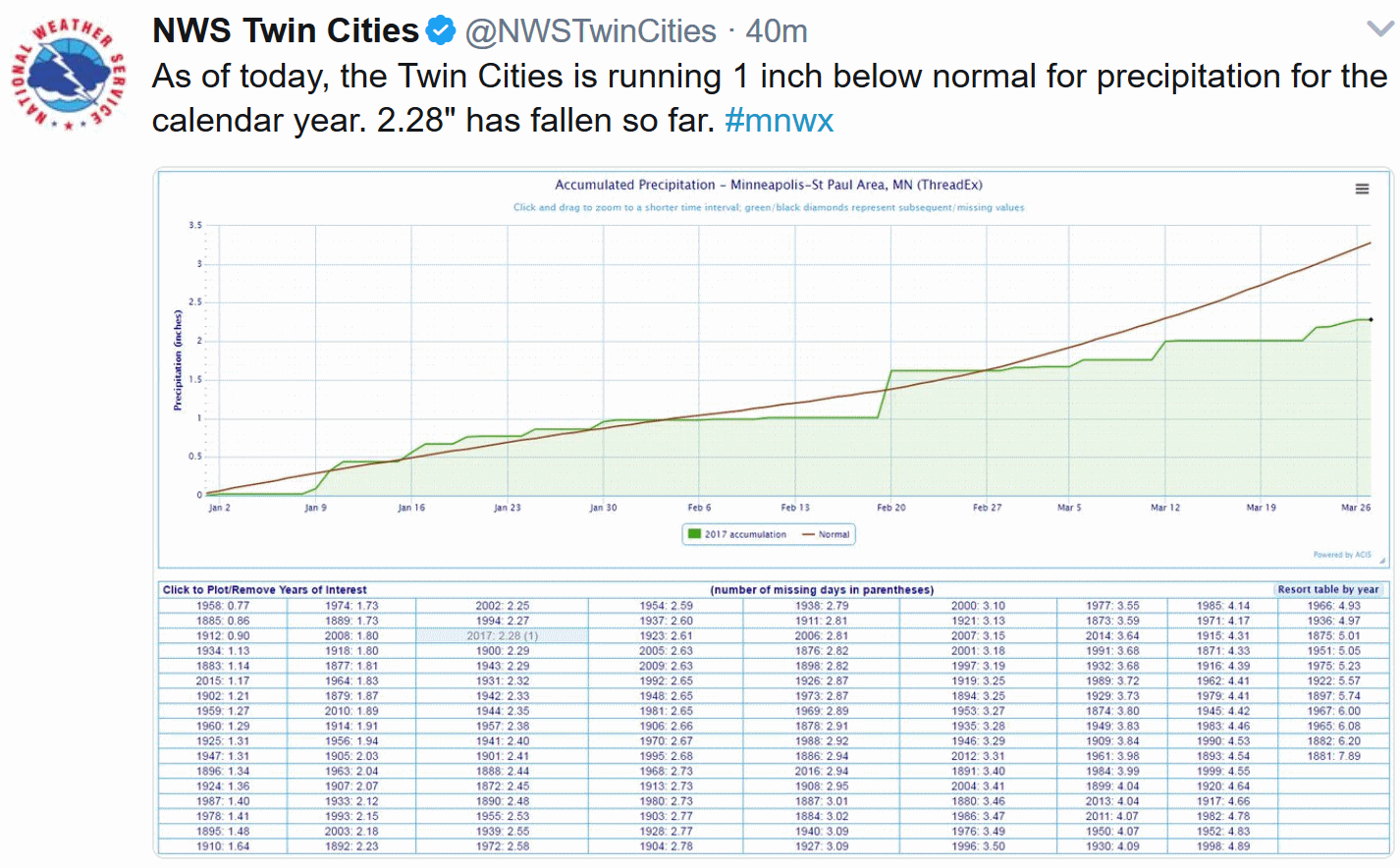
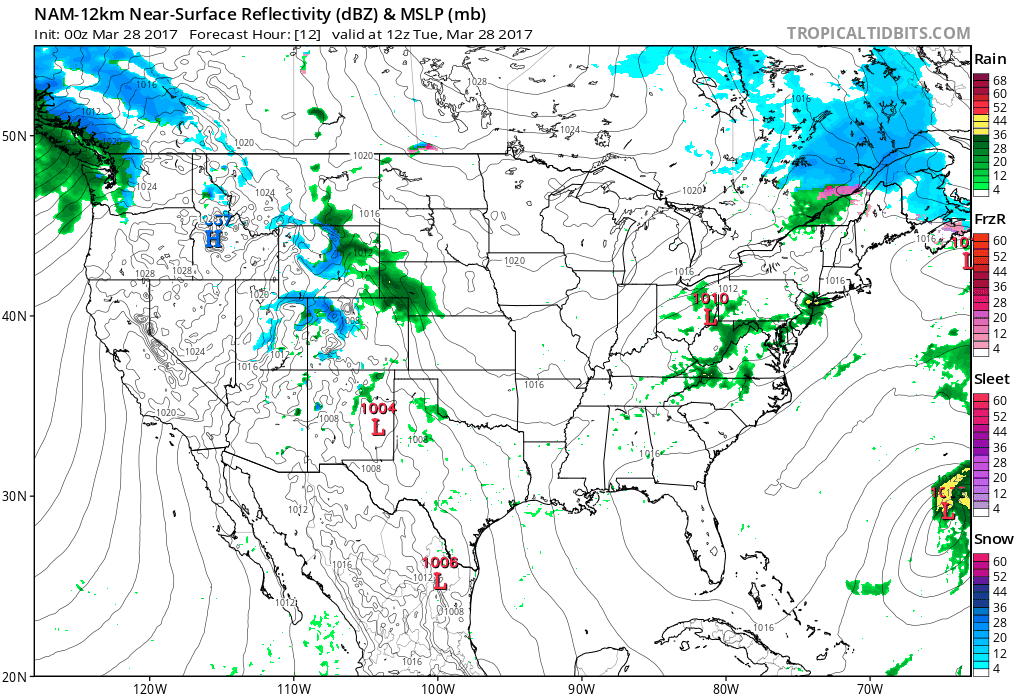


Energy Independence. Pat Collins continues: "Very
soon our school district will become one of the first school districts
in the country to be 110% solar powered. Our school district is called
Chisago Lakes Schools and has 3 Elementary buildings, 1 Middle School
and 1 High School. Each school has a 40 KwH photovoltaic system on it.
The school district had such a great experience with solar that they
bought and additional 6,221 panels in a Solar Garden at Eictens Cheese
Farm and will have another 8,000 panels soon in another solar garden
that is under construction. This will give us around 15,000 panels. Our
solar odyssey began in 2008 when I and some 7th graders decided our
middle school should go solar. We met with the school board and asked
permission to raise $103,000 to put up a 10 KwH system. This was at the
height of the great US economic collapse and the school board was
skittish as we wanted no money from the school, just the opportunity to
raise $100K. The school board said no, but a few weeks later at another
meeting, three 7th graders convinced them we could do this. And two
years later they pulled it off, raising $73,000 (falling prices) to fund
a 10 KwH system. A couple of years later, we wrote a grant for $722,000
and led Minnesota schools into 3rd party leasing. Each step of the way
was so positive for our schools.... that they eventually bought into
local solar gardens to bring us to 110% solar powered. Our Solar panels
will save our taxpayers 6 million dollars over 30 years and prevent 56
million pounds of Carbon Dioxide from being emitted into the atmosphere.
Here is a video that reflects a bit on that effort:
How Has Solar Improved the Local Area? I asked Pat Collins to address the ROI for solar: "I think the economics of our solar panels will be staggering... saving 6 million dollars over 30 years is great with always tight school budgets.... and then the question becomes... what programs can the extra money be put into? Fine arts? Academics? Bricks and Mortar? And the thought that we will prevent 56 million pounds of Carbon Dioxide from being emitted is priceless.... Perhaps the best benefit is that the solar energy and the news that it brings keeps environmental concerns in the spotlight and family conversations and the cost benefit of that is presses.
I think the public and neighboring districts
see Chisago Lakes Schools as progressive and as innovators? And todays
world sees a competition for students with open enrollment.....based on
perception and quality of programs. As Mitch mentioned to me after your
talk at Minnehaha... "Your school is a template for what other schools
need to do" Our students push into solar helped educate a community who
saw this renewable energy as nothing but a positive which helped pave
the way for the county to do their solar work.... a trickle "up" effect...."
Call to Action.
Interested in more information about a money-saving solar power
solution for your school (or town?) Reach out to Pat Collins directly: pcollins@isd2144.org

Not Quieting Down Anytime Soon.
NOAA's 12 KM NAM model shows showers pushing across the Mid Atlantic
and New England today; more severe T-storms flaring up from central
Texas into southern Oklahoma, while another fire hose of Pacific
moisture douses Seattle and Tacoma. The Pacific Northwest finally dries
out by late week as showery rains push into northern California. More
snow for the Colorado Rockies? Looks like an extended skiing season this
year. Loop: Tropicaltidbits.com.
A Little Spring In Your Step.
If everything goes just right a few bank thermometers may flash 60F on
the drive home this afternoon; temperatures trending milder later this
week into next week. I think we've finally turned the corner. It's a big
corner. ECMWF data for MSP: WeatherBell.
April Warming Trend.
A higher sun angle coupled with a shrinking polar vortex accelerates
warming in April, which you would expect. A vigorous subtropical jet
stream is forecast 2 weeks out at 500 mb, capable of more severe storm
outbreaks over the southern half of the USA.
WMO "Retires" Two Hurricane Names. Here's an excerpt from a NOAA press release: "You’ve heard the last of Matthew and Otto – at least as Atlantic storm names.
These two storms ravaged the Caribbean so much last year their names
have been retired by the World Meteorological Organization’s Region IV
Hurricane Committee, of which NOAA's National Hurricane Center is a
member. Matthew and Otto are the 81st and 82nd names to be removed from the Atlantic list. Storm names are retired if they were so deadly or destructive that the future use of the name would be insensitive.
Matthew became a category 5 storm on the Saffir-Simpson scale on the
night of Sept. 30, over the central Caribbean Sea at the lowest latitude
ever recorded in the Atlantic Basin..."
Tornadoes Striking at Record Pace in U.S. So Far This Year. It's going to be an extra-long severe and tornado season, at the rate we're going. Here's an excerpt from MLive.com: "...The
storm track in January, February and March has taken strong storms
across the U.S. These strong storms are tracking farther north than
usual for this time of year, resulting in much warmer than normal
temperatures being pulled northward into the Midwest. So the storm track
has been more typical of April or May, even in the middle of winter. As
a result, severe weather amounts have been more typical of April or
May..."
Photo credit: "The March 6 storm that did some heavy damage to the county’s Pihl’s Park, including flipping this camper over, was designated as a tornado that first touched down near Bricelyn and traveled nearly 10 miles to near the Wells area. It was designated by the National Weather Service last week as the earliest-in-the-season tornado ever reported in Minnesota."
Leigh Orf Creates Super-Storms From the Comfort of His Desk.
Supercomputer simulations of super-cell thunderstorms, the rotating
monsters that often go on to spin up tornadoes, is improving rapidly as
speeds increase and costs continue to come down. Here's an excerpt of an
interview at madison.com: "...I
have to say this is just one simulation, but there are two main
takeaways that I'll give you. Before the tornado forms, there are a
whole bunch of mini-tornadoes. They're not actually called tornadoes,
they're called mesocyclones. They're little spinning whorls of air that
are maybe 100 yards in diameter. They're in the simulation, but you
can't see them in the atmosphere — the air is spinning, but it's not
kicking up debris and there's no cloud...they're kind of scooting into
where a tornado would form. The second thing we've noticed, we gave a
name: we call it a streamwise vorticity current. In a storm, there's
cold air that's formed by the storm itself...the storm is producing this
cold pool of air. One of the things my simulation is suggesting is that
the tornado is made up of air from that cold pool. But there's a
certain feature we've identified that's sort of hard to explain in words
— it's a helically flowing horizontal thing of air, that kind of goes
up and becomes tilted into the supercell..."
Image credit: "When a tornado is fully formed, the simulation reveals several structures that make up the tornado, including the streamwise vorticity current (SVC), thought to be a main driver of the tornadic activity (seen in yellow)." (Photo: University of Wisconsin-Madison).
Mammoth Got So Much Snow This Winter It Called In the National Guard for Help. Amazing. The Los Angeles Times has details: "Hey, Mammoth Lakes,
add this group shot of the National Guard to your winter scrapbook.
Burdened with removing the 44 feet of snow that had fallen this season,
the village of 8,200 called in the National Guard earlier this month to
help cart 4,000 tons of it away. The five-day offensive, involving 17
air and Army troops, will be just one of the many memories in this
winter of monster, record-setting snows. The SOS — shovel our snow — was
issued after the village and Mono County declared a state of emergency
to seek help in handling the piles that lined homes and streets. A
request for snow removal assistance was passed along to the state Office
of Emergency Services (Cal OES), which then called in the Guard..."
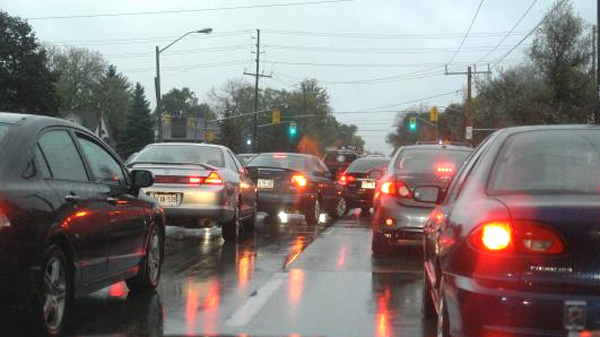


How Much Does a Cloud Weigh? Check the math, but the calculations described at Mental Floss seem to pan out: "...Next,
figure out how big the cloud is. By measuring a cloud’s shadow when the
sun is directly above it, you can get an idea of its width. LeMone does
this by watching her odometer as she drives under a cloud. A typical
cumulus, she says, is about a kilometer across, and usually roughly
cubical—so a kilometer long and a kilometer tall, too. This gives you a
cloud that’s one billion cubic meters in volume. Do the math with the
density and volume to determine the total water content of the cloud. In
this case, it's 500,000,000 grams of water, or 1.1 million pounds.
That’s a lot of weight to wrap your head around, so LeMone suggests
putting it in more familiar terms, like elephants. That cloud weighs
about as much as 100 elephants. If you’re a Democrat and you’re feeling
partisan, she says, you could substitute 2500 donkeys. If you care more
for dinosaurs than politics, you could also say the cloud weighs about
as much as 33 apatosauruses..."
Great American Eclipse. Check out this amazing web site for everything you need to know for the total solar eclipse coming up on August 21: "On August 21, 2017, millions of people across the United States will see nature's most wondrous spectacle — a total eclipse of the Sun. It is a scene of unimaginable beauty; the Moon completely blocks the Sun, daytime becomes a deep twilight, and the Sun’s corona shimmers in the darkened sky. This is your guide to understand, prepare for, and view this rare celestial event. A total solar eclipse is unlike anything you've seen in your life. As totality approaches, you will see the astonishing sight of day turning to night and the Sun's corona blazing in the sky. This is truly a great American eclipse because totality will sweep the nation from the Pacific to the Atlantic. Nearly everyone in the US can reach this total solar eclipse within one day's drive. An eclipse is a cosmic billiard shot — the Sun, Moon, and Earth line up to reveal the Sun's atmosphere, it's corona. Eclipses on Earth occur only because of an amazing celestial coincidence..."
Don't Let Knuckle-Draggers on Ohio's Energy Future Win, Leaving the People with Zero. Entrenched (fossil fuel) monopolies are doing whatever they can to avoid disruption by an inevitable clean energy economy. Here's an excerpt of an Op-Ed from the Editorial Board at cleveland.com: "...In his Dec. 22 veto message, Kasich said that, from 2009 to 2012, energy efficiency standards had produced $1.03 billion in savings and would produce an estimated $4.15 billion in lifetime savings. The response: an even more draconian attempt this year in HB 114, a bill goosed by utility lobbies, to dump the standards in favor of "goals and incentives" that the bill's sponsor, Cincinnati-area Republican Rep. Louis Blessing, said would work just fine. Is it any wonder that among the groups testifying in favor of HB 114 have been the Ohio Coal Association and the American Petroleum Institute of Ohio...?"
Photo credit: "Cleveland's first privately owned, large-scale wind turbine, pictured in 2009 atop a 140-foot tower at the Pearl Road Auto Parts and Wrecking Co. at 5000 Pearl Road. The turbine is still there but Ohio energy policy is yo-yoing in a way that's cost the state jobs and investment, writes the editorial board." (Expedite Renewable Energy, File, 2009).
Photo credit: "Researchers store vials of aging cells in liquid nitrogen for use in future experiments. If work progresses slowly, some also plan to freeze themselves, with instructions to reawaken them once science has finished paving the way to immortality." Photograph by Grant Cornett for The New Yorker.
Can We Know What Animals Are Thinking?
My dog (Leo) thinks I'm an idiot, but he seems to love me anyway.
Here's an excerpt of an eye-opening story from The Economist and Medium: "...Nevertheless,
most scientists now feel they can say with confidence that some animals
process information and express emotions in ways that are accompanied
by conscious mental experience. They agree that animals, from rats and
mice to parrots and humpback whales, have complex mental capacities;
that a few species have attributes once thought to be unique to people,
such as the ability to give objects names and use tools; and that a
handful of animals — primates, corvids (the crow family) and cetaceans
(whales and dolphins) — have something close to what in humans is seen
as culture, in that they develop distinctive ways of doing things which
are passed down by imitation and example. No
animals have all the attributes of human minds; but almost all the
attributes of human minds are found in some animal or other..."
Could You Give Up TV For a Year? Not sure I could, but I salute the people who have. Here's an intriguing story at The Washington Post: "...Americans
are obsessed with television, spending an average of five hours a day
pointing ourselves at it even as we complain we’re busier than ever. It
rules our lives, whether we admit it or not. A friend of mine claims to
not watch much TV, but whenever I visit her — morning, noon or night —
it’s on. After my husband admitted we hadn’t watched any while on
vacation, a family member was floored: “A whole week without TV?” And
when I showed off my new house, visitors were most excited about the
cable outlet on the back porch; now I can even point my outdoor
furniture at a TV. But for all the time we spend with it, TV doesn’t
repay us very nicely. People who watch more television are generally unhappier, heavier and worse sleepers, and have a higher risk of death over a defined length of time. Studies have found links between children and teenagers who watch a lot of TV and worse attention spans, lower grades and structural differences in brain regions associated with intelligence..."
Photo credit: "The beginning of the Sullivan line." Americasroof/CC BY-SA 2.5
“Money is the root of every mess you can think of. Anyone who lives for money is surely missing the best things in life.” – Sadie and Bessie Delany
TODAY: Lots of sun, quite pleasant. Winds: E 5-10. High: 61
TUESDAY NIGHT: Clear to partly cloudy. Low: 39
WEDNESDAY: Clouds increase, late showers southern MN. Winds: E 8-13. High: 54
THURSDAY: Damp start, then clearing. Winds: NE 8-13. Wake-up: 40. High: 51
FRIDAY: Plenty of sun, no complaints. Winds: NW 5-10. Wake-up: 34. High: 56
SATURDAY: Mix of clouds and sun, drama-free. Winds: NW 5-10. Wake-up: 38. High: 55
SUNDAY: Partly sunny and pleasant. Winds: SE 5-10. Wake-up: 40. High: 59
MONDAY: More clouds, few showers. Winds: E 5-10. Wake-up: 42. High: near 53
Climate Stories...
20 Common Myths That Climate Scientists Often Hear. Dr. Marshall Shepherd has done a public service by organizing the 20 biggest (whoppers). Here's an excerpt of a recent post at Forbes:
1. The climate always changes naturally, and we always had extreme weather. This is an accurate statement but misses the point that natural cycles can be altered by anthropogenic processes (Natural growing grass+fertilizer and Major League Baseball-home runs in the steroid era). Natural processes have always and will continue to affect climate. We just have to figure out how this relatively new anthropogenic "ingredient" is modifying the recipe.
2. Ok, the climate is changing but how do we know humans are contributing? There are a couple of good public-focused resources to answer this. One, from Bloomberg, provides a visual graphic to explain relative contributors to climate warming, and the other, from The Economist, explains it with text. For science background, the Intergovernmental Panel on Climate Change (IPCC) report is a good source....
Image credit: NASA.

The new research on planetary waves and climate change referenced above is here.
Image credit: "This animation shows changes in the polar jet stream from June 1, 2015 to July 31, 2015. The jet stream is approximated by crosses. The northerly shift of the jet stream may be linked to a warming arctic, and record melt of the Greenland ice sheet in 2015." (Marco Tedesco/Lamont-Doherty Earth Observatory)
More Warm Spring Days. Not every day, but the trend is more warmth earlier in the warm season, according to Climate Central: "...Spring is getting warmer, on average, as the globe heats up from the increase in greenhouse gases in the atmosphere. As a result, the number of spring days with above-normal temperatures is increasing in many places in the U.S. In an unchanging climate, the number of days above normal and below normal should be relatively balanced and constant through the years. For meteorological spring, that number would be 46 out of the 92 days. In the majority of these cites, the number of days above normal has risen sharply. In some cases, there are more than 10 additional above-normal days than there were a few decades ago..."
What You Can Do About Climate Change. There are lots of things you can do, including voting for pro-science politicians running for local, state and national offices. An article at The New York Times argues that the most important thing you can do is drive a more fuel-efficient vehicle: "...The simple fact is that American drivers are a significant contributor to greenhouse gas pollution, so having a vehicle fleet that burns less fuel can have an outsize impact on total emissions. Though the United States has just 4 percent of the world's population, it is responsible for 14 percent of man-made greenhouse gases that end up in the atmosphere. Transportation accounts for 27 percent of those emissions. And 60 percent result from driving personal vehicles..."
No comments:
Post a Comment